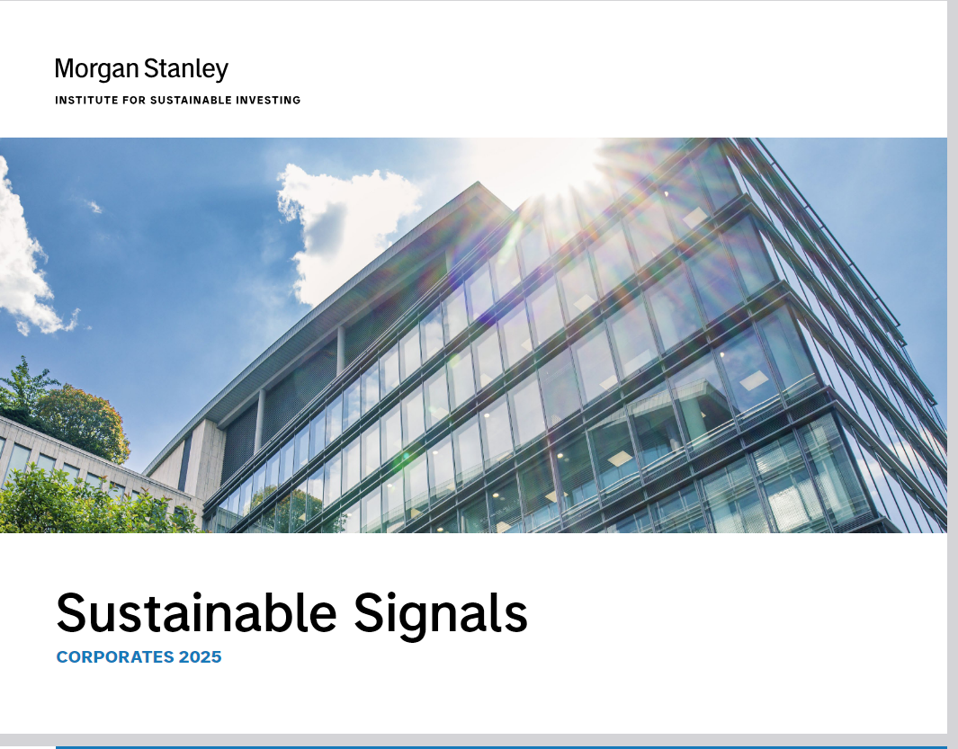While you may hear a lot about the Trump administration trying to wipe out climate change-and clean energy-related data and contracts, the private sector is moving full speed ahead because the business case is stronger than ever. That’s what a panel of C-level Fortune 500 experts on the front lines explained recently at the Workiva Amplify conference in Maryland.
This panel focused on “how sustainability can actually help you navigate interesting times, add to the resilience, add to the innovation, and add to the long-term growth of your organization,” as the moderator, Jeff Young, Environment and Sustainability Editor at Newsweek said at its opening.
CEOs across the economy apparently agree, based on a recent Morgan Stanley study that found 88% of CEOs believe that sustainability creates long-term value.
Young said we’re facing, “massive uncertainty at the macroeconomic level,” plus “a rapidly shifting regulatory landscape,” on top of the “growing urgency to address sustainability goals” because the planet continues to warm dangerously, exemplified by our having just experienced “the two hottest years in our history, at least recorded history.” And extreme weather events are becoming more ferocious, more frequent, and more expensive and hitting unexpected areas.
The panelists were: Maura Hodge, Partner, U.S. Sustainability Leader at KPMG; Mandi McReynolds, Chief Sustainability Officer of Workiva; and Tensie Whelan, Distinguished Professor of Practice, Founder and Director of the NYU Stern Center for Sustainable Business, in addition to Young.
About 150 people attended this session. Amplify overall had ~2,800 attendees in person and another several hundred virtually, ranging across industries and regions of the country and the world, according to Workiva sources.
Here are six keys to how sustainability helps navigate tough times and drives long-term growth, from this panel:
- Sustainability is now in the boardroom: “The conversation moved into the boardroom, and so every business now has to pay attention to sustainability, particularly from a reporting perspective,” Hodge explained. Even though the Securities and Exchange Commission (SEC) pulled back its climate risk disclosure rules, executives and boards realize that sustainability has gone from a “nice to have” to a strategy that brings business value, she said. “How do we lean into that business value? How do we think about it strategically and then talk about it both for compliance, but also to express that value?,” is the focus now, Hodge said.
- Sustainability is both a strategic risk and a strategic opportunity: “As we think about sustainability, the fact is that it has become, and is going to become even more so, a strategic risk and a strategic opportunity for all businesses of all types,” Whelan said. “If we do not understand how climate risk affects our business, both from an opportunity side or a risk side, we are going to be in trouble.”
- “Consumers are asking for it”: Based on NYU Stern Center for Sustainable Business studies based on actual purchasing data, Whelan said, “Consumers are asking for it.” adding their research “shows that consumers are continuing to grow their demand for sustainable products, paying 28% premium.”
- Focus on what is most material to your business: Start at “what is the most material to your business? What’s your business superpower? What can you do to add value to a society?,” McReynolds said, based on input from Workiva’s customer base of 6,400, including 80% of the Fortune 1000. Bring together the “group of executives that have responsibility to drive the strategy forward. It can’t all live within a sustainability team,” she advised, and determine how that information gets reported up to the board regularly. “You’re really looking at what’s the most material to your business is the first strategy, not compliance. And then the second piece is the executive team is aligned to the key KPIs that report back to the board.”
- How “Return on Sustainability Investment can drive better financial performance: Sustainability data can be used “for better decision making,” Whelan explained based on extensive open source research they did at Stern. “What kind of decisions do you want to make? How can those decisions drive better financial performance?”
Whelan used waste as an example, citing how data related to circularity can aid the business and bottom line, by pointing out how much energy and money a business expends to collect, move, manage and dispose of waste. It’s about operational efficiency, she pointed out. “Circularity also helps you avoid exposure to tariffs. Renault is putting 45% of used car components back into new cars.” Having the right data is key. “When you collect the right data, you can actually drive better financial performance and better decision making, both looking backward and scenarios for looking forward.”
What’s most important?:
“I think what’s most important as you try to put this business case together and go to your leadership, you’re sharing with them how this will actually impact your business,” Hodge explained, “You need to understand, number one, how to be consistent in telling that message, how to measure the information that you’re putting together, and then to be able to support it. And that comes down to the level of precision of the information that you might need.”
What might surprise people coming from Hodge, an auditor, is that she said you might not need 100% precise numbers for each factor, sometimes you can use assumptions and estimates.
Flipping the script
“We’re flipping the script on things that we assumed to be true previously,” Hodge said, explaining how measuring sustainability-related parts of the operations and supply chain can reveal cost savings, risks and opportunities that were invisible – and bridge silos.
The strategy is “getting it built into some of those other mechanisms where it’s not just the sustainability person that’s popping up,” she suggested. Then, “it is built into the conversations through all the different silos that work their way up.”

